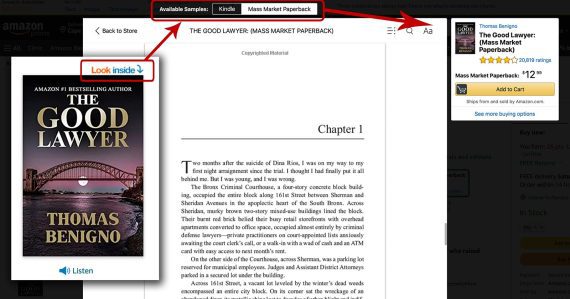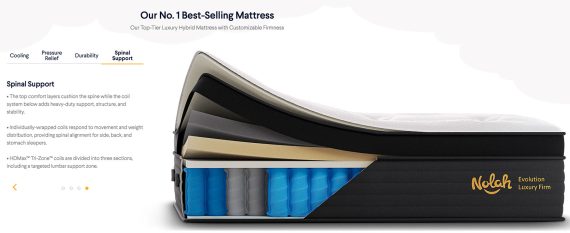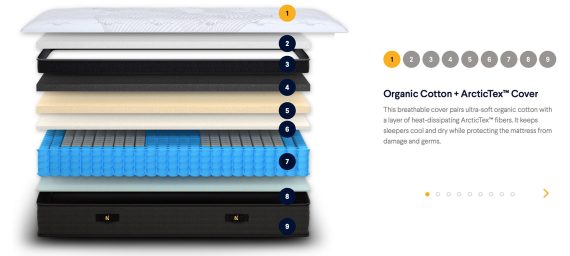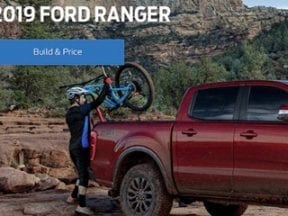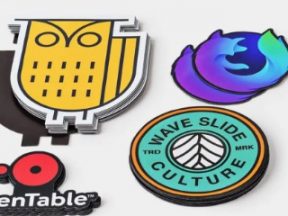You’ve likely noticed Amazon’s “Look inside” label alongside books for sale. A similar “Listen” icon appears next to an audio version. Both features help shoppers understand the contents and thus guide them to purchase.
Inside looks are an excellent way to convey value. While helpful, 360-degree views capture only the outside. Inside views explain a product’s features and reinforce the descriptions and reviews.
For books, a look inside is akin to a movie trailer. It offers a taste of a writer’s style and the story’s vibe.
A “peek inside” clothing would highlight benefits not apparent in standard photos, such as reinforced stitching, interior pockets, or labels. A look inside an inkjet printer could point out proprietary components and common user touchpoints, such as ink cartridge holders and paper trays.
Inside views can be photos, videos, illustrations, or animations, perhaps accompanied by speech or other sound. These internal looks should be engaging to spark shoppers’ interest.
A look inside goes beyond “what’s in the box” and how an item is made. It educates consumers and confirms an item’s functionality, quality, and sustainability. It also streamlines comparisons across products and brands.
Nolah Mattress’s site provides detailed illustrations of its products’ layered construction, followed by an interactive breakdown of each layer. Together, the illustrations answer pressing questions and reveal how the models stand up to competitors’ versions.
—
Looks inside physical products should focus on arming shoppers with knowledge and trust. Even simple items such as coffee mugs and storage containers should include interior views since exteriors are often misleading.
Presenting inside looks depends on the product and audience. For example, plenty of moms use camera bags for diapers, but a seller of such bags likely targets photographers. Peak Design uses camera gear to show potential configurations of its bags and illustrate how much each will hold. It helps shoppers visualize using the product themselves.
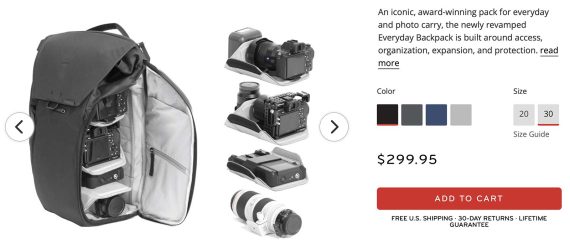
Combining an inside view with real-life gear helps shoppers visualize using the product. Source: Peak Design.
When preparing products for inside looks, consider what shoppers are looking for.
Address:
- Uses. Will it be worn? Will it store things? Create things? Consider prime uses and configurations.
- Quality. Show close-up photos or videos of the materials and construction, such as zippers and stitching.
- Hidden features. Highlight what’s not obvious. Learn from car manufacturers that point out key, unseen details.
- Maintenance. Some products require maintenance. A seller of coffee makers could show how to install water filters.
- Benefits vs. competitors. This goes beyond quality and features. Explain why yours gives more bang for the buck. Perhaps it’s built to last longer or requires less maintenance. An inside view helps tell the story.
- Alternative uses. Inside views can help a product with secondary uses generate more sales. For example, musicians and crafters (and moms) could use the above camera bag. Show those configurations.
- FAQs. Consider common support queries and customer review statements.
Once you’ve generated inside looks, use the content on product landing pages and explainers. Repurpose it into social slideshows, videos, and ad campaigns.

